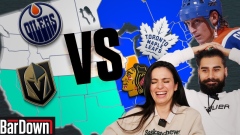In the film "Jack of All Trades," available in Canada on Netflix today, Stu Stone delves into the 90's trading card boom, exploring its beginnings, and the events that ultimately led to the bubble bursting.
If you take a peek far underneath your bed, way past the pile of forgotten clothes, and a slight look to the left of that shakeweight you just had to have, you'll likely spot a shoebox containing special cardboard relics from the past.
The box may say "cards," but in the mind of a nostalgic sports fan like yourself, it might as well say treasure, even though you didn't require a map to remember where you buried it. Of course, this treasure doesn't have a whole lot of monetary value. You knew that, though, as you've been cursing your 10-year-old self for years, questioning why, oh why, you ever opened that Upper Deck 1989 MLB box set that contained the rare and infamous Ken Griffey Jr. rookie card -- one of the most coveted cards in this history of card collecting.
After all, if you hadn't been so foolish as to open those packs an bent those cards, you could have made hundreds of thousands -- no --possibly MILLIONS of dollars now, right?
Now perhaps you never personally collected baseball cards. Well, whether you collected baseball cards, hockey cards, Pokemon cards or Aussie rules football cards, we were all led to believe as children that preserving collectible cards was almost as good as buying a savings bond. It was only a matter of time until scarcity created value and you tripled your investment.
But what if we told you that even a mint condition version of that legendary, highly sought after, extremely hyped and historically important Ken Griffey Jr. card goes for no more than a thousand bucks, and that the majority of them sell for less than $100?
It all comes down to hype.
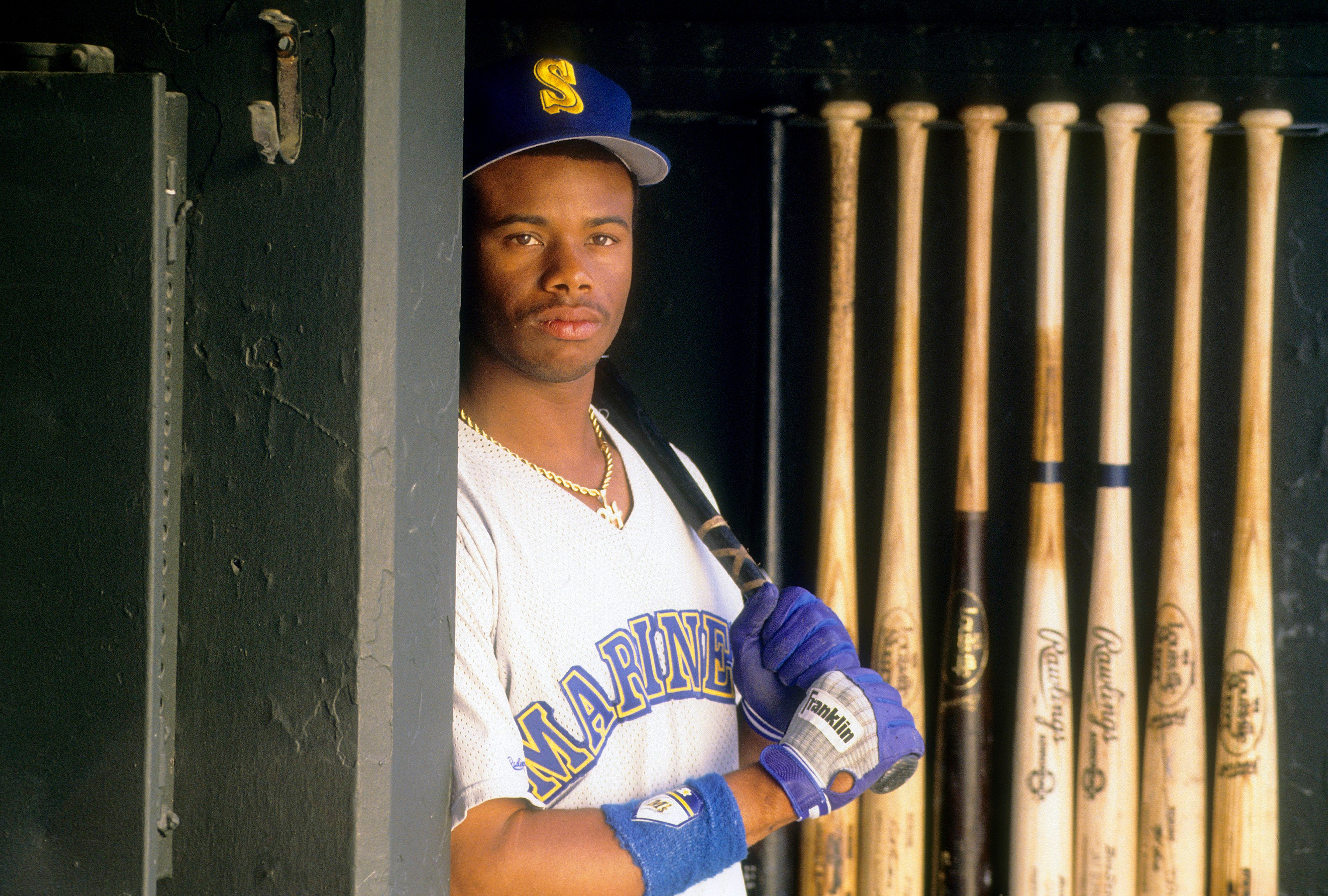
Back in 1989, with the help of an ambitious high schooler, the Upper Deck trading card company managed to transform the collectible trading card industry into an economic juggernaut nearly overnight with one single decision: putting Ken Griffey Jr.'s card in their box set.
We sat down with Stone as well as Tom Geideman, a former product manager at Upper Deck and the man who is widely credited for pitching the idea of having Ken Griffey Jr. featured in the 1989 box set.
Daniel Zakrzewski: Tom, how did you first get your start at Upper Deck and what was your role there?
Tom Geideman: I actually worked at a trading card shop in Anaheim, California, called Upper Deck Card Shop, well, Upper Deck was the name of the baseball card shop, and it was down the street from Angel Stadium. I was working there after school as a high school senior, and my job there was that I was like the rookie stockbroker, so I was analyzing all the different players in the minor league system and trying to figure out which guys to invest in. So that’s actually how I got my foot in the door over there and when the two founders of the corporations, Paul Sumner and Bill Hemrick, brought me in, I got to use my expertise with analyzing players and the up and coming rookies and everybody else, putting together the whole set of cards.
DZ: Stu, from what it sounds like, you've had a pretty expansive baseball card collection for quite sometime. What made you want to embark on this journey now and delve deeper into the world of trading cards for a film?
Stu Stone: Well before I get to that, I need to say that Tom was being very modest by failing to mention that Ken Griffey Jr. being card number one was his call, and that’s the thing that made the entire company. Holograms and face photography aside, that Griffey Jr card is the thing that put the whole card industry into a different stratosphere and this kid who was working as a high schooler at a baseball card shop that was a analyzer -- and there’s so many bitcoin parallels you could make here -- but this guy was analyzing minor league players to see who they should invest in for rookie cards and when they tapped him to do the set he chose Griffey Jr. and nobody else had Griffey Jr. as the showpiece of their set. It’s like the number one payoff and it came from this high school kid who worked at the shop. It’s unbelievable.
As far as me, growing up, my dad owned baseball card shops. My dad worked at and owned 11 of them. So I worked at the card shop. Our whole life was baseball cards, you know what I mean? It was the perfect storm for my childhood, because I was a kid in that era and my dad was the king of cards for all of my friends. So baseball cards were such a huge part of my childhood.
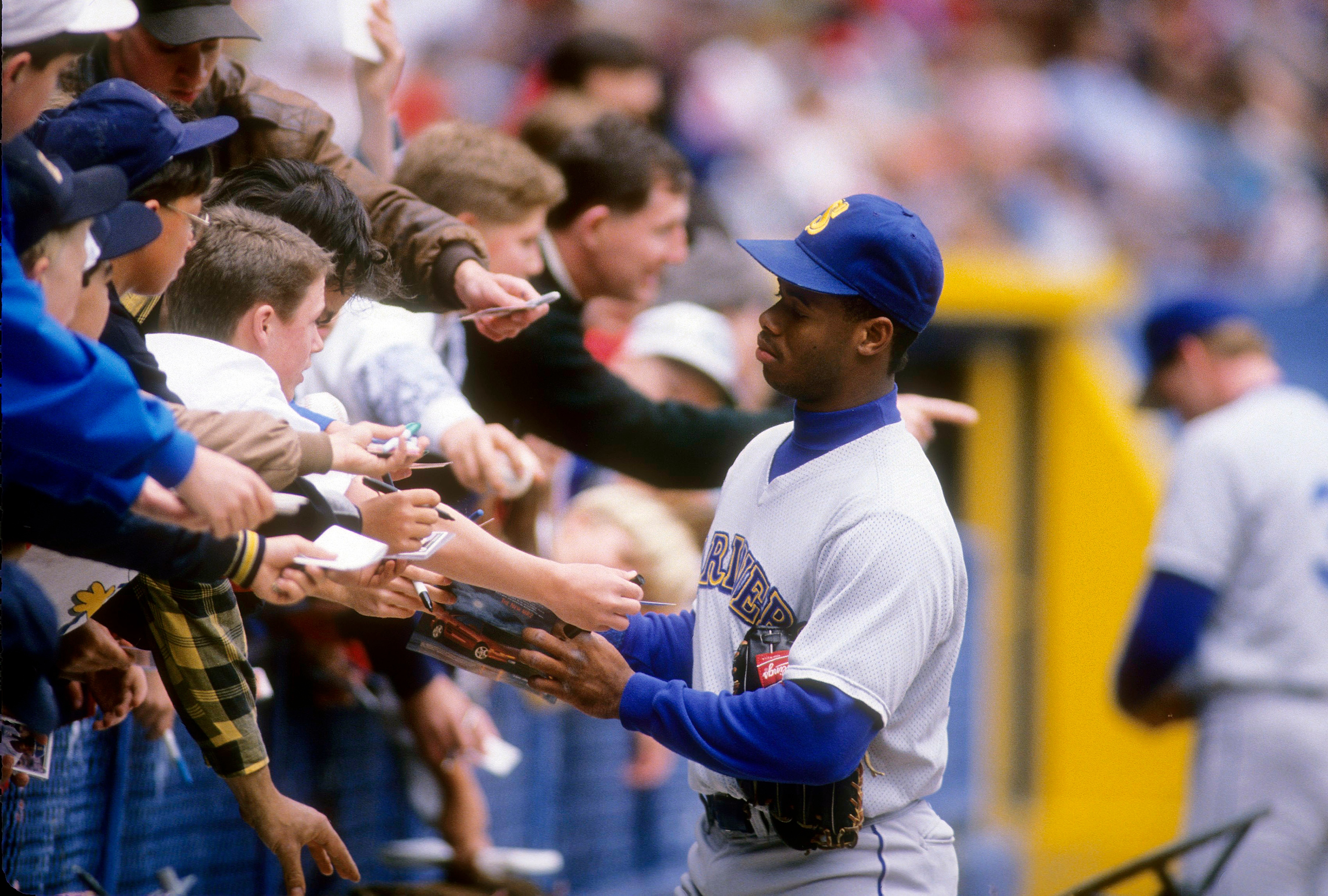
I guess when my interest peaked is when my grandfather had passed away and they found all these boxes in his basement that were labelled with my name on them and they were packed when my parents got divorced in like the 1990s, and I didn’t know what was in there. It was almost like opening a time capsule.
And when I opened it up and found all the cards, I got so excited because I figured holy %*#*, this is like my dad’s story, how he found his Mickey Mantle rookie card, it’s crazy. And that’s kind of what got me looking into cards again and then when I found out the more and more I dug into it I was like okay this is crazy, I was expecting to make a film about finding these treasures and making millions of dollars you know what I mean and then we ended up with this completely different film which is way better than what I ever could’ve imagined.
DZ: In your personal opinions...why was it Ken Griffey Jr.'s rookie card that changed the game?
Stone: From a collector’s perspective, I mean, listen, Ken Griffey Jr. and Upper Deck is the perfect %*#*ing storm of all perfect storms. I mean, Upper Deck was launching this new set, they weren’t using the same cardboard as other companies, they’re doing high gloss, pictures, artsy hologram on the back, and then you’ve got the card, the Ken Griffey Jr., that’s the closest thing to a Mickey
Mantle rookie card aesthetically that we’ve ever seen. It just looks like a good card.
In a lot of ways it’s got that same feel. And add into the fact that baseball as a game was such a huge game, it was America’s game. And Jose Canseco was a huge star at the time, not just a baseball star, so there was all sorts of eyes on baseball and at the right time. Ken Griffey Jr. arrived on the scene with the glowing bubbles and the hat backwards and the smile and walking up the wall, and everything. The guy was everything he was supposed to be, and if you were collecting cards at the time, you wanted his rookie card.
And even if Griffey turned out to be a bust, he’s still the number one card in the Upper Deck set, the first set.
DZ: So why was Griffey selected as the number one card in his rookie season?
Geideman: Well from my point of view, when I was trying to figure out who to put as the first card in the first set, and it’s actually kind of funny because as far as actual production of the cards, like behind the scenes thing, it was the last one that we turned over. So we started at Form 2, which was cards 101 to 200, and every last one that we did as far as producing the cards was the first form, Form 1, which was cards number one to 100. And when I laid out the entire product, I wanted the top 26 -- 26 representing the amount of Major League Baseball teams at the time -- to be the star rookies, which is like an ode to the top cards where they had the little trophies on them for the All-Rookie teams, that type of thing. So we brought skeptical attention to 26 different rookies.
And the reason I projected Griffey to be so fantastic is because he could do everything. He had the sweetest left-handed swing. Granted, I’m looking at newspapers and magazines and things like that, and gathering all this information. I’m not able to go and watch him play. He was the number one pick in the draft, his father, Ken Griffey Sr., was a big part of the Big Red Machine, not Pete Rose, not Tony Perez or Joe Morgan or any of the super high-profile guys, but he was just such a key contributor to the team in all facets, that it just seemed like a natural choice... and he was in a small market, the Seattle market. It seemed like he was going to be the greatest.
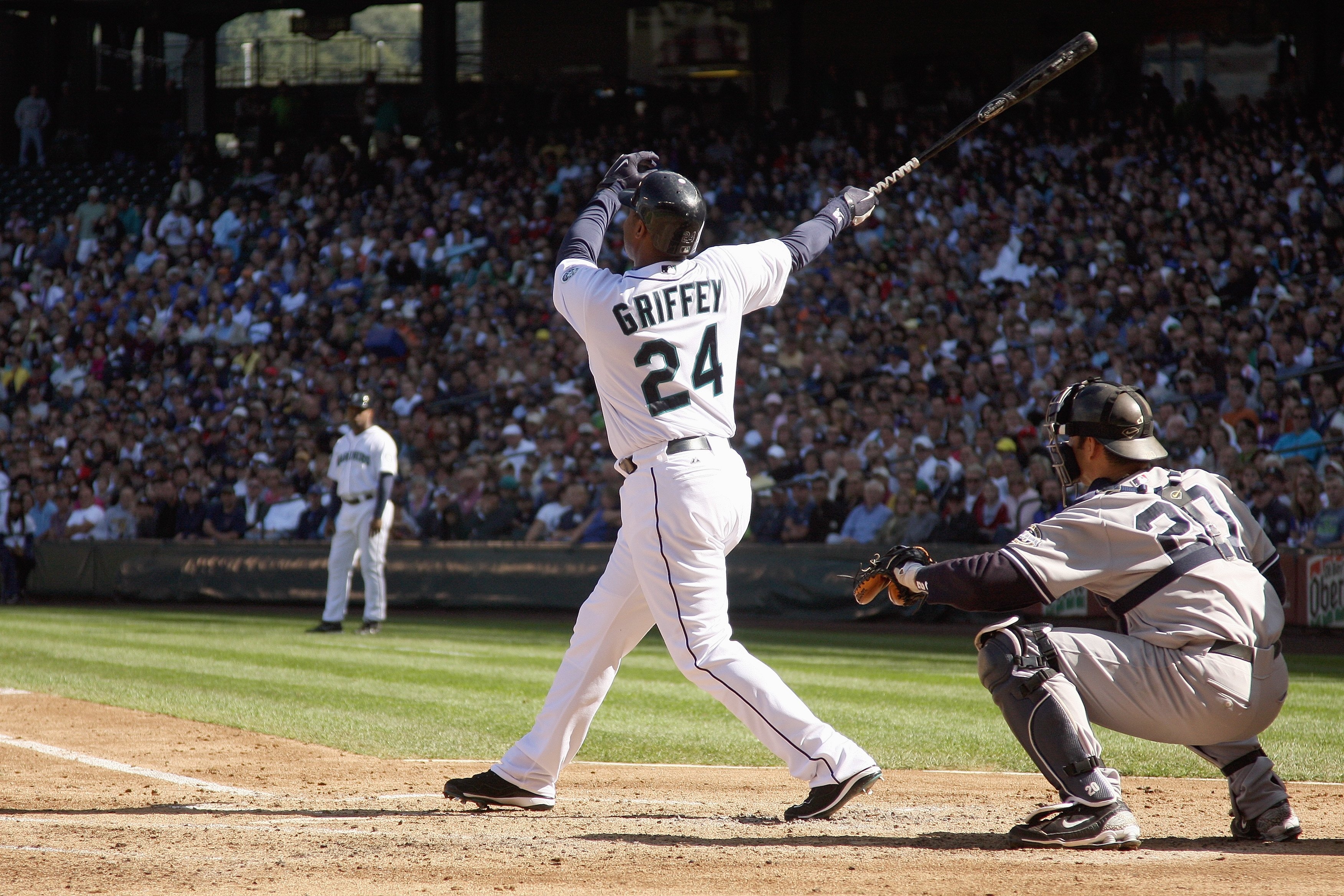
DZ: So despite the hype, a Ken Griffey Jr. card doesn't seem to be worth all that much, because it doesn't seem to be all that rare. Why is that?
Stone: Well, you have to really watch the movie to learn what really happened there. Without giving away too much to come, it’s all about production, man. A Mickey Mantle rookie card, the whole kind of birth of the industry is all sort of one big perfect storm. Lightning in a bottle. That doesn’t happen in industries. People went back, found their old cards, and some of them had Mickey Mantle rookie cards and most of them didn’t because everybody threw them in the garbage. Their mothers threw them out. They were actually a rare thing. And when you actually have educated collectors -- that was in the ‘80s and early ‘90s -- every kid is not putting it in the shoebox and throwing it away. They’re pulling it right out of the pack, putting it right into a screw case or a holder or a binder. Now everybody’s got the card, and everybody’s got one in good condition.
So right there that’s it, because there was no real parallels to this type of market, nobody saw it coming because this was all exciting. Same thing happened to comic books. Any comic book from the ‘80s or ‘90s, once you teach someone how to collect something and there becomes a lot of collectors, then the rarity instantly goes down. And that’s why the industry now is trying to stay ahead of that mentality by printing these one-of-one cards and everything is numbered and serialized and players’ hair follicles are on the card, you know? It’s crazy.
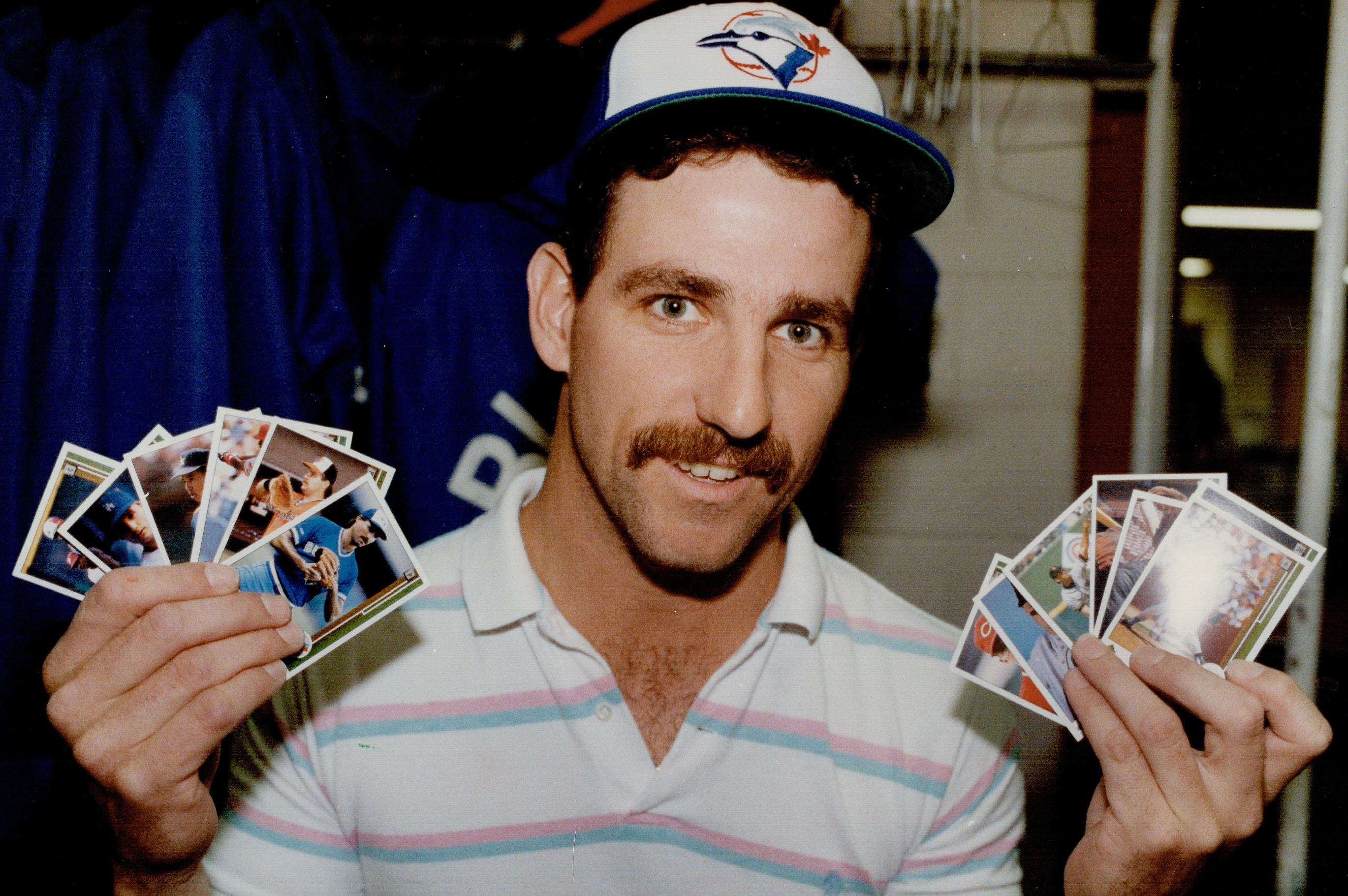
And the packs, kids are priced out of the game. Kids couldn’t even buy a pack of cards. If they buy a pack of cards, it’s like general Wal-Mart or Target release. It’s priced for completely, like a thousand dollars and you get like four cards in the pack and they’re all autographed with a piece of blood in it, you know what I mean? That’s what it’s become.
Geidman: And the crazy thing is people look at this stuff now, if you found a pack for five dollars a pack, it can have the exact same type of contents and rarity and everything else as a five hundred dollar pack, but people assume you can’t get value out of a five dollar pack, which is totally wrong. You can find the same scarcity, the same everything else, but people look at it and say, ‘Well I have to buy the five hundred dollar pack.’
One pack of five hundred dollars instead of a hundred packs of five dollars, they would get way more value out of the hundred packs of five dollars but they think that the money has spent high in order to get value. So it’s this weird kind of mentality that goes into the packs.
DZ: For anyone who's interested in getting the whole story behind the baseball card phenomena of the 90's, when can they expect to watch 'Jack of All Trades and where can they find it?
Stone: The film is going to be premiering at the Cineplex Film Festival starting March 3rd, and I will be there and Tom will be there and some other people that appear in the film will be there. In Canada, the film will be released on Super Channel for everybody to watch on demand and on their stations starting in May.
